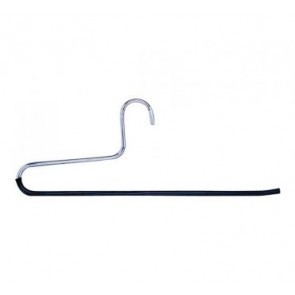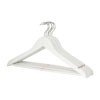Consumer and business clothes hangers
Consumer Market
Everyone has clothes that need to be hung, so clothes hangers can be found in every household. Therefore, this segment holds a large share of the total demand for clothes hangers. For consumers, price is the most important factor when purchasing hangers. Quality comes in second place, and the appearance of the hangers is the least important. For many consumers, a clothes hanger is not a design object because it is often covered with clothing and used out of sight in a closet. Therefore, the finishing level of these hangers is lower compared to those in the business market. Additionally, quality is less critical because the hangers are not replaced as frequently as in the business market. Consumer hangers are often packaged in smaller quantities of 3 or 4 pieces. These hangers can be purchased at many large stores such as Ikea, Action, Hema, Xenos, and Blokker.
Business Market
For the business market, there are various sizes and types of hangers available in wood, plastic, or metal. These hangers are durable and of higher quality. Additionally, there are many different types of hangers for various applications such as special trouser, skirt, pantalon, shirt, and coat hangers. All these types come in different sizes and dimensions. The packaging quantities of clothes hangers in this segment are much higher, with plastic hangers often packaged in quantities of 250 or more, and metal and wooden hangers in quantities of 100 or more. Due to these larger quantities, the price-to-quality ratio is more favorable compared to consumer hangers packaged in sets of 3 or 4 pieces. There are therefore many different options available for consumers and businesses when purchasing clothes hangers. The key factors here are price, quality, and the quantities used in packaging.




